Bistatic Radars: Emerging Technology
Original price was: ₹15,015.40.₹12,012.32Current price is: ₹12,012.32.
ISBN: 9780470026311
Author/Editor: Mikhail Cherniakov
Publisher: John Wiley
Year: 2008
1 in stock (can be backordered)
Description
The impact of bistatic radar technology on remote sensing is increasing as bistatic systems cross the theoretical threshold into practical embodiment. The wide spectrum of radar applications, including space exploration, defence, transport, aerospace, and meteorology, provides persistent impetus for this progress. This book is dedicated to the more advanced studies in bistatic radar which are currently the subject of intensive research activity and development.
With contributions from the leading experts in the field of bistatic radar research, this book collates the latest developments in the field focusing particularly on bistatic synthetic aperture radar (BSAR) and passive bistatic radar systems (PBRS). Within these two areas the text:
addresses the main BSAR topologies: spaceborne BSAR, airborne BSAR and space-surface BSAR;
analyses the resurgent interest in, and practical applications of, PBRS;
introduces passive BSAR technology;
covers research of systems used in aircraft detection and tracking, and passive radar remote sensing of the ionosphere and the upper atmosphere.
Bistatic Radar: Emerging Technology is an invaluable resource for practising engineers and researchers involved in the design and implementation of advanced bistatic radar systems in aerospace, communications, defence, transport and meteorology. Following on from Bistatic Radar: Principles and Practice it is also a comprehensive reference on the latest research for postgraduate students taking specialist courses in radar technology.
Additional information
| Weight | 0.862 kg |
|---|
Product Properties
| Year of Publication | 2008 |
|---|---|
| Table of Contents | Chapter 1. Fundamentals Of Bistatic Synthetic Aperture Radar. 1.1 Introduction. 1.2 BSAR Basic Geometry and Resolutions. 1.3 Scientific Applications of BSAR . 1.3.1 Position and Velocity Measurements. 1.3.2 Bistatic Stereo-Radargrammetry . 1.4 Summary. 1.5 Abbreviations. 1.6 Variables. 1.7 References. Chapter 2. Spaceborne Bistatic Synthetic Aperture Radar. 2.1 Introduction. 2.2 Key Design Issues in Spaceborne BSAR. 2.2.1 Basic Trade-Offs in Spaceborne Bsar Configurations. 2.2.2 Impact of Bistatic Observation on Mission and System Design. 2.2.3 Payload-Bus Performance Trade-Off. 2.2.4 BSAR Missions Functional/Technological Key Issues. 2.3 Mission Analysis of Spaceborne BSAR. 2.3.1 BSAR Orbit Design. 2.3.2 BSAR Attitude and Antenna Pointing Design. 2.4 Summary. 2.5 Abbreviations. 2.6 Variables. 2.7 References. Chapter 3. Bistatic SAR for Earth Observation. 3.1 Introduction. 3.2 BISSAT Scientific Rationale and Technical Approach. 3.3 Bistatic Payload Main Characteristics and Architecture. 3.4 Orbit Design. 3.5 Attitude Design and Radar Pointing Design. 3.6 Radar Performance. 3.7 Summary. 3.8 Abbreviations. 3.9 Variables. 3.10 References. Chapter 4. Spaceborne Interferometric and Multi-Static SAR Systems. 4.1 Introduction. 4.2 Spaceborne SAR Interferometry. 4.3 Interferometric Mission Design. 4.3.1 Satellite Formation. 4.3.1.1 Twin Satellite Formations. 4.3.1.2 Phase and Time Synchronisation. 4.3.1.3 Modelling Oscillator Phase Noise in Bi- and Multistatic SAR. 4.3.1.4 Disturbances of the Azimuth Impulse Response. 4.3.1.5 Range Displacement and Time Synchronization. 4.3.1.6 Phase Synchronization. 4.3.2 Operational Modes for Bi- and Multistatic SAR Systems. 4.3.2.1 Pursuit Monostatic Mode. 4.3.2.2 Bistatic Mode . 4.3.2.3 Alternating Transmit Mode. 4.3.2.4 Simultaneous Transmit Mode . 4.4 Mission Examples. 4.4.1 Tandem-X . 4.4.1.1 Mission Overview. 4.4.1.2 Coherence Estimation. 4.4.1.3 Interferometric Phase Errors. 4.4.1.4 Relative Height Accuracy. 4.4.1.5 Absolute Height Accuracy. 4.4.2 Semi-Active Terrasar-L Cartwheel Configuration. 4.4.2.1 Mission Overview. 4.4.2.2 Ambiguity Analysis. 4.4.2.3 Multi-Baseline Processing. 4.4.2.4 Volume Decorrelation. 4.4.2.5 Polarimetric SAR Interferometry. 4.5 Advanced Multistatic SAR System Concepts. 4.5.1 SAR Tomography. 4.5.2 Ambiguity Suppression and Resolution Enhancement. 4.5.3 Multistatic SAR Imaging. 4.5.4 Along-Track Interferometry and Moving Object Indication. 4.5.5 Multi-Baseline Change Detection. 4.6 Discussion. 4.7 Abbreviations. 4.8 Variables . 4.9 References. Chapter 5. Airborne Bistatic Synthetic Aperture Radar. 5.1 Bistatic Airborne Sar Objectives. 5.2 Airborne Bistatic Sar Configurations. 5.2.1 Time Invariant Configurations. 5.2.1.1 Along-Track Time Invariant Configuration. 5.2.1.2 Across-Track Time Invariant Configuration. 5.2.2 General Bistatic Configurations. 5.2.3 MTI Applications. 5.2.4 Examples of Resolution Performances. 5.3 Airborne Bistatic SAR Processing Specificity. 5.3.1 Changes in The SAR Synthesis Process. 5.3.1.1 The Image Geometry Issue. 5.3.1.2 Time-Domain Processing Issues. 5.3.1.3 Frequency-Domain Processing Paradigm (Monostatic). 5.3.1.4 Bistatic Frequency-Domain Processing. 5.3.2 Motion Compensation Issues. 5.3.2.1 Monostatic Frequency Domain Mocomp. 5.3.2.2 Bistatic Frequency Domain Mocomp. 5.3.3 Geometrical Distortion Model for Airborne Bistatic SAR Images. 5.3.3.1 Monostatic SAR Geometrical Distortion Model. 5.3.3.2 Bistatic SAR Geometrical Distortion Model. 5.3.4 Miscellaneous Processing Issues . 5.4 Open-Literature BSAR Airborne Campaigns. 5.4.1 Michigan BSAR Experiment. 5.4.2 Qinetiq BSAR Experiment. 5.4.3 FGAN BSAR Experiment. 5.5 The ONERA-DLR Bistatic Airborne SAR Campaign. 5.5.1 Preparing the Systems. 5.5.1.1 The RAMSES System. 5.5.1.2 The E-SAR System. 5.5.1.3 Selection of the Frequency. 5.5.1.4 Defining the Configurations. 5.5.1.5 The Pre-Flight Testing. 5.5.1.6 Navigation Issues. 5.5.2 The Campaign. 5.5.3 Processing the Bistatic Images. 5.5.4 Calibration of the Bistatic Images. 5.6 Selection of Results from the Campaign. 5.6.1 Quasi-Monostatic Versus Monostatic. 5.6.1.1 Bistatic Angle Effect on The Scattering. 5.6.1.2 Bistatic Interferometric Images. 5.6.1.3 Cross-Platform Bistatic Interferometric Images. 5.7 Cross-platform bistatic interferometric images. 5.8 Abbreviations. 5.9 Variables. 5.10 References. Chapter 6. Space-Surface Bistatic SAR. 6.1 System Overview . 6.2 Spatial Resolution. 6.2.1 Monostatic SAR Ambiguity Function . 6.2.2 Resolution in BSAR. 6.3 SS-BSAR Resolution. 6.3.1 SS-BSAR Ambiguity Function. 6.4 SS-BSAR Resolution Examples. 6.5 Summary. 6.6 Abbreviations. 6.7 Variables. 6.8 References. Chapter 7. Passive bistatic radar systems. 7.1 PBR development. 7.2. Sensitivity and coverage for passive radar systems. 7.2.1 The bistatic radar equation. 7.2.2 Target bistatic radar cross section. 7.2.3 Receiver noise figure. 7.2.4 Effective bandwidth and integration gain. 7.2. 5 Performance prediction. 7.2.6 Sensitivity analysis conclusions. 7.3 PBR system processing. 7.3.1 Narrowband PBR processing. 7.3.1.1 Direct signal cancellation. 7.3.1.2 Target detection. 7.3.1.3 Bearing estimation. 7.3.1.4 Target association. 7.3.1.5 Target state estimation. 7.3.1.6 Batch estimators. 7.3.1.7 Extended Kalman filter. 7.3.2 Wideband PBR processing. 7.3.2.1 Data collection requirements. 7.3.2.2 Reference signal conditioning. 7.3.2.3 Direct signal and clutter cancellation. 7.3.2.4Matched filter processing. 7.3.2.5 Target detection. 7.3.2.6Target association. 7.3.2.7 Target state estimation. 7.3.3 Multistatic PBR. 7.4 Waveform properties. 7.4.1 Introduction. 7.4.2 Range and Doppler resolution ? ?self ambiguity?. 7.4.3 Range and Doppler resolution ? ?bistatic and multistatic ambiguity?. 7.4.4 Influence of waveform properties on design and performance. 7.4.5 Waveform properties conclusions. 7.5 Experiments and results. 7.5.1 Experimental overview. 7.5.2 Expected system performance. 7.5.3 Data collection. 7.5.4 Adaptive filtering of the signal. 7.5.5 Target detection by cross-correlation. 7.5.6 Long integration time. 7.5.7 Use of decimation to improve efficiency. 7.5.8 FMCW like approach. 7.5.9 Constant false alarm rate (CFAR) detection. 7.5.10 Direction finding. 7.5.11 Plot to plot association. 7.5.12Target state estimation. 7.5.13Plot to target association (multiple illuminator case). 7.5.14 Verification of system performance. 7.6 Summary and conclusions. 7.7 Abbreviations. 7.8 Variables. 7.9 References. Chapter 8. Ambiguity Function Correction in Passive Radar: DTV-T Signal. 8.1 Introduction. 8.2 DTV-T Signal Specification. 8.3 DTV-T signal ambiguity function. 8.3.1 The DTV-T signal model. 8.3.2 AF of DTV-T signal random components. 8.4 Impact of DTV-T signal deterministic components on the signal ambiguity function. 8.5 Mismatched signal processing. 8.5.1 Receiver stricture. 8.5.2 Signal preprocessing in the receiver. 8.5.3 Pilot carrier equalisation. 8.5.4 Pilot carriers filtering. 8.6 Summary. 8.7 Abbreviation. 8.8 Variables. 8.9 References. Chapter 9. Passive Bistatic SAR with GNSS transmitters. 9.1 Global Navigation Satellite Systems. 9.2 Power budget analysis . 9.3 Analysis of the signal to interference ratio. 9.3.1 SIR at the antenna output. 9.3.2 Analysis of the SIR improvement factor. 9.3.3 Simulation results. 9.4 Results discussion. 9.5 Experimental study of SS-BSAR. 9.6 Summary. 9.7 Abbreviations. 9.8 Variables. 9.9 References. Chapter 10. Ionospheric Studie. 10.1 Introduction. 10.2 The ionosphere and upper atmosphere. 10.2.1 Gross Structure of the Ionosphere. 10.2.1.1 Vertical Structure. 10.2.1.2 Magnetic Latitude. 10.2.2 Ionospheric Models. 10.2.3 Fine Structure, Field-Aligned Density Irregularities. 10.2.3.1 Electron and Ion dynamics. 10.2.3.2 E-region Plasma Irregularities. 10.2.3.3 Mid Latitude Sporadic E. 10.2.3.4 F region irregularities, ?spread F?. 10.2.3.5 Meteors and Meteor Trails. 10.2.4 Radio Interaction with the Ionosphere. 10.2.4.1 Absorption. 10.2.4.2 Refraction. 10.2.4.3 Bragg Scatter. 10.2.4.4 Thomson Scatter. 10.2.4.5 Thomson Scatter. 10.3 Bistatic, Passive Radar Studies. 10.3.1 Bistatic radar observations of the ionosphere. 10.3.2 The Manastash Ridge Radar. 10.3.2.1 Basic Principles of operation. 10.3.2.2 Signal Processing. 10.3.2.3 System Features and Requirements. 10.4 Trends for ionospheric research. 10.5 Abbreviations. 10.6 Variables. 10.7 References. |
| Author | Mikhail Cherniakov |
| ISBN/ISSN | 9780470026311 |
| Binding | Hardback |
| Edition | 1 |
| Publisher | John Wiley |
You must be logged in to post a review.

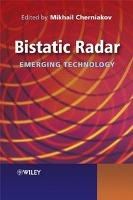
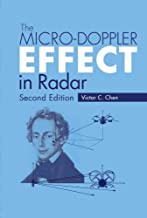
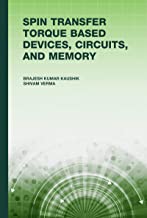
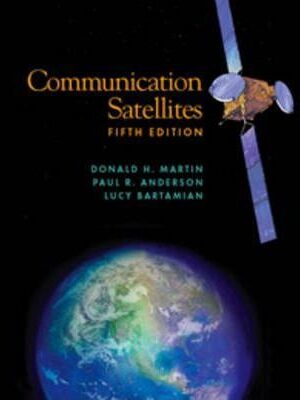
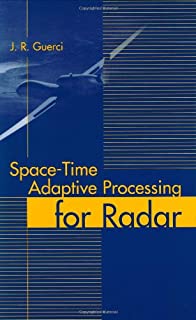
Reviews
There are no reviews yet.